There’s something remarkably comforting about the aroma of pandan wafting through your kitchen, especially when it’s blended with the creamy richness of coconut in a traditional Filipino dessert. Sticky buko pandan rice is not just a treat for your taste buds but a delightful journey into the heart of Filipino cuisine. This beloved dessert combines the sweet, fragrant flavors of buko (young coconut) and pandan leaves with the satisfying texture of sticky rice, creating a dish that’s both nostalgic and irresistible. In this guide, we’ll walk you through making the perfect sticky buko pandan rice, sharing tips, variations, and stories that bring this delectable recipe from kitchen to table. Whether you’re a seasoned dessert enthusiast or a home cook ready to dive into Filipino culinary delights, this recipe promises to be a sweet adventure.
Discovering Buko Pandan Rice
Origins and Cultural Significance
Sticky buko pandan rice holds a special place in Filipino culture, often served at festive gatherings and special occasions. This dessert is a beautiful fusion of native ingredients, with pandan leaves imparting a unique aroma and flavor, while buko (young coconut) adds a creamy texture. Traditionally, it is believed that pandan, with its distinct scent, was used to mask the smell of cooked rice, enhancing its appeal. Over time, this practice evolved into a beloved dessert, reflecting the Filipino penchant for sweet, comforting dishes. Buko pandan rice is not just a dessert; it’s a reflection of Filipino hospitality and culinary creativity, often shared among family and friends. Its popularity has spread beyond the Philippines, introducing others to the rich tapestry of flavors that define Filipino cuisine. This dish showcases the adaptability and ingenuity of Filipino cooking, celebrating both tradition and innovation.
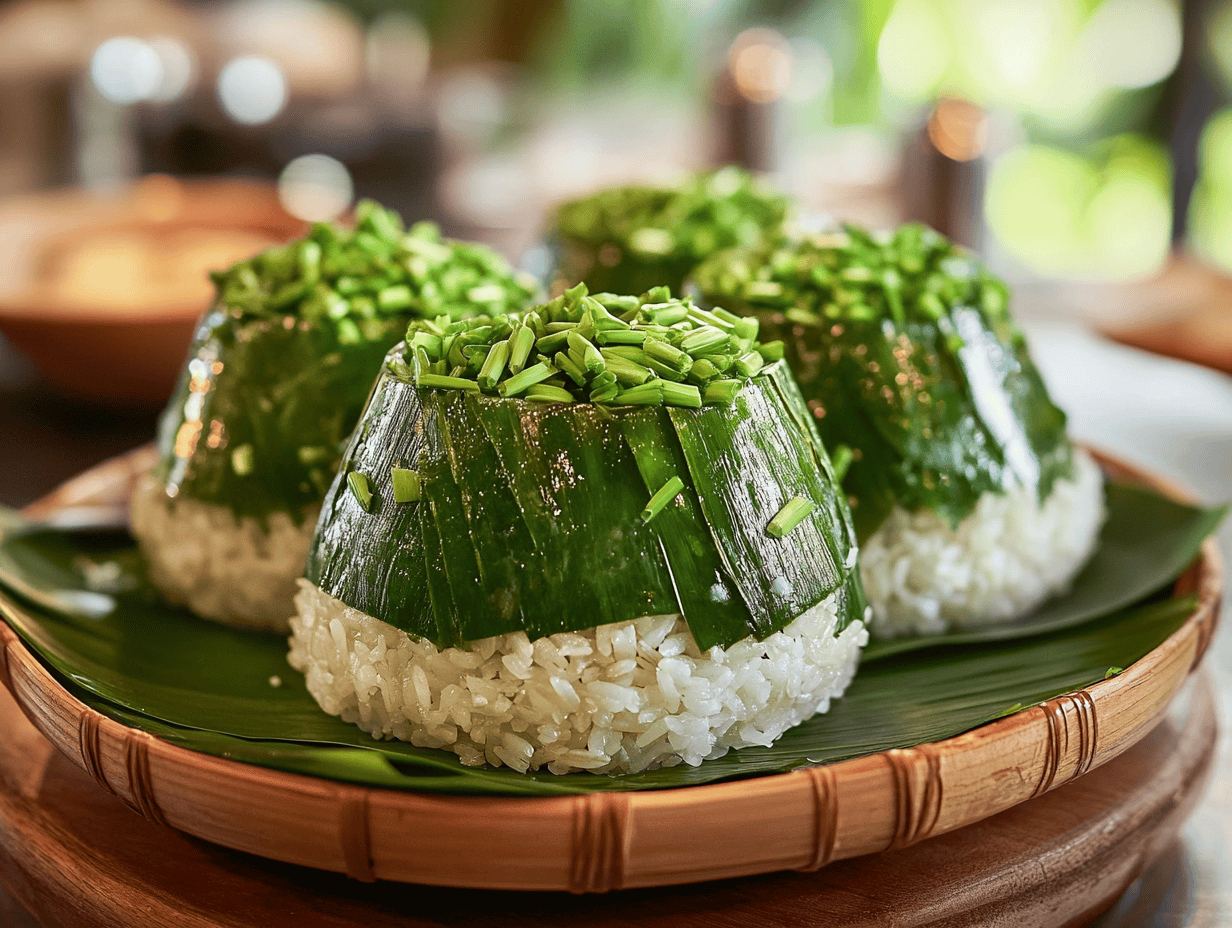
Why It’s a Beloved Filipino Treat
Buko pandan rice is cherished across the Philippines for its delightful blend of flavors and textures, embodying the essence of Filipino desserts. Its popularity stems from the combination of pandan’s fragrant aroma, the creamy consistency of coconut milk, and the chewy texture of sticky rice. This combination creates a sensory experience that is both familiar and comforting. The dessert is often associated with celebrations, from birthdays to fiestas, making it a staple on many Filipino tables. The joy of sharing buko pandan rice goes beyond its delectable taste; it represents community and togetherness, reinforcing bonds among family and friends. Moreover, its simplicity and versatility allow home cooks to personalize the dish, adding a personal touch to each serving. This adaptability has helped it remain a beloved treat, symbolizing the warmth and hospitality that Filipino culture is renowned for.
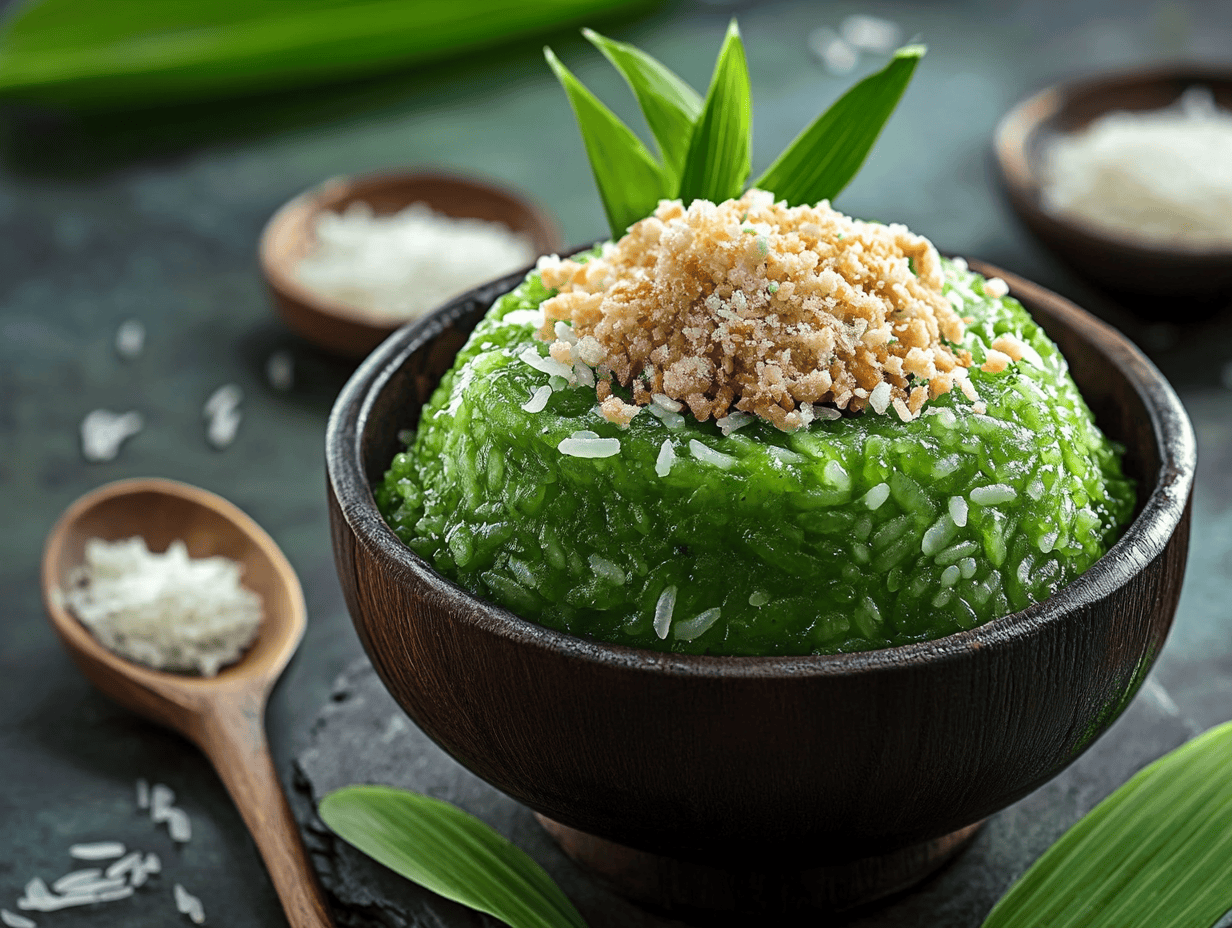
Perfecting the Sticky Rice
Sticky Buko Pandan Rice Recipe
Recipe Name
Sticky Buko Pandan Rice
Summary
Sticky Buko Pandan Rice is a traditional Filipino dessert made with glutinous rice, coconut milk, pandan extract, and young coconut (buko). This sweet, creamy, and fragrant dish is perfect for family gatherings, holidays, or simply satisfying a sweet tooth.
Servings
8 people
Estimated Cost
$8
Times
- Prep Time: 15 minutes
- Cook Time: 30 minutes
- Resting Time: 10 minutes
- Total Time: 55 minutes
Categories
- Courses: Dessert
- Cuisines: Filipino
- Keywords: Sticky buko pandan rice, Filipino dessert, Pandan rice
Equipment
| Amount | Name | Notes |
|---|---|---|
| 1 | Rice Cooker | For cooking rice. |
| 1 | Medium Saucepan | For coconut mixture. |
| 1 | Mixing Spoon | For stirring. |
| 1 | Serving Dish | For presentation. |
Ingredients
| Amount | Unit | Name | Notes |
|---|---|---|---|
| 2 | cups | Glutinous rice | Washed thoroughly. |
| 1 1/2 | cups | Coconut milk | Full-fat preferred. |
| 1/2 | cup | Condensed milk | For sweetness. |
| 1/4 | cup | Sugar | Adjust to taste. |
| 1/4 | tsp | Pandan extract | Adds a fragrant aroma. |
| 1 | cup | Shredded young coconut | (Buko), fresh or frozen. |
| 1/4 | cup | Toasted sesame seeds | Optional, for garnish. |
Instructions
- Rinse the glutinous rice thoroughly until the water runs clear.
- Cook the rice in a rice cooker with 2 cups of water until fully cooked. Alternatively, simmer in a covered pot until the water is absorbed.
- In a medium saucepan, combine coconut milk, condensed milk, sugar, and pandan extract. Stir over medium heat until the mixture starts to simmer (do not boil).
- Add the cooked glutinous rice to the saucepan and mix well to coat the rice with the coconut-pandan mixture.
- Continue cooking over low heat, stirring constantly, until the mixture thickens and becomes sticky.
- Remove from heat and gently fold in the shredded young coconut (buko).
- Transfer the sticky rice mixture to a serving dish or mold. Let it rest for 10 minutes before serving.
- Garnish with toasted sesame seeds, if desired, and serve warm or at room temperature.
Nutrition
| Nutrient | Amount per Serving |
|---|---|
| Calories | 350 kcal |
| Carbohydrates | 60 g |
| Protein | 5 g |
| Fat | 12 g |
| Saturated Fat | 10 g |
| Cholesterol | 0 mg |
| Sodium | 50 mg |
| Fiber | 3 g |
| Sugar | 25 g |
Notes
- Store Sticky Buko Pandan Rice in an airtight container in the refrigerator for up to 3 days.
- To reheat, add a splash of coconut milk and warm it in the microwave or stovetop.
- Fresh pandan leaves can be used instead of extract; boil them with the rice for added aroma.
Essential Ingredients and Tools
To create the perfect sticky buko pandan rice, gathering the right ingredients and tools is crucial. The star ingredient is glutinous rice, known for its sticky texture when cooked. Pandan leaves, fresh or frozen, are essential for infusing the dish with their signature aroma and flavor. Fresh buko, or young coconut, provides a sweet, tender contrast to the chewy rice. Coconut milk adds richness and a creamy consistency, while sugar balances the flavors with its sweetness.
For tools, a rice cooker simplifies the process, ensuring even cooking of the glutinous rice. A strainer is useful for washing the rice, and a sharp knife helps in preparing the pandan leaves and buko. Additionally, a large mixing bowl aids in combining all ingredients smoothly. With these essentials in hand, you’re set to craft a traditional Filipino dessert that promises both taste and authenticity.
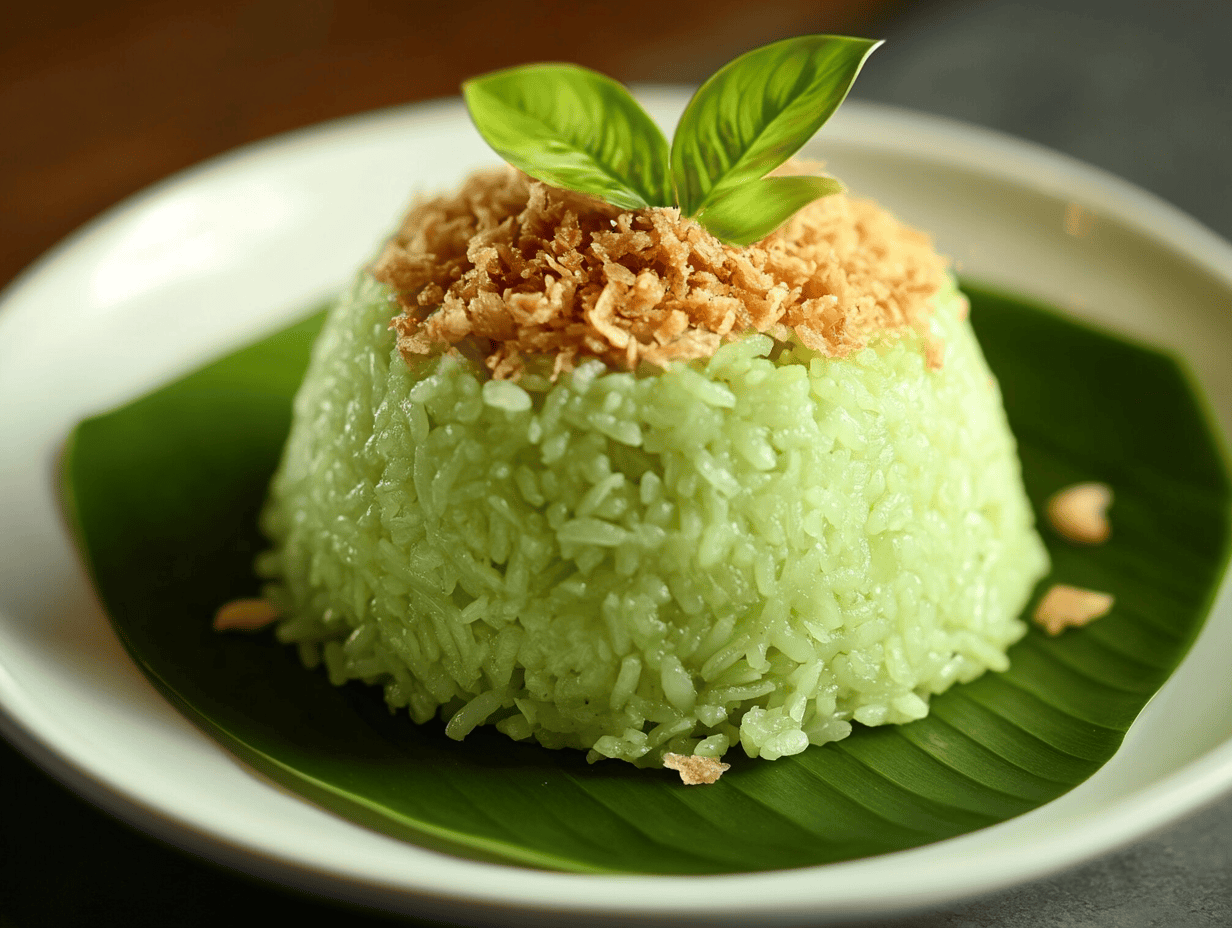
Creating sticky buko pandan rice is a straightforward process when broken down into easy steps. Begin by washing the glutinous rice thoroughly to remove excess starch. Place the washed rice in a rice cooker, adding enough water to cover it, then top it with pandan leaves for infusion. Cook until the rice becomes tender and sticky.
While the rice cooks, prepare the coconut mixture. In a saucepan, combine coconut milk and sugar over medium heat, stirring until the sugar dissolves. Once the rice is done, remove the pandan leaves and gently fold in the coconut mixture, ensuring even distribution.
Next, add the shredded buko or young coconut to the mixture, stirring gently to incorporate. Allow the rice to absorb the flavors for a few minutes before serving. This step-by-step guide ensures that your buko pandan rice is rich, aromatic, and perfectly cooked, ready to enjoy as a delightful Filipino dessert.
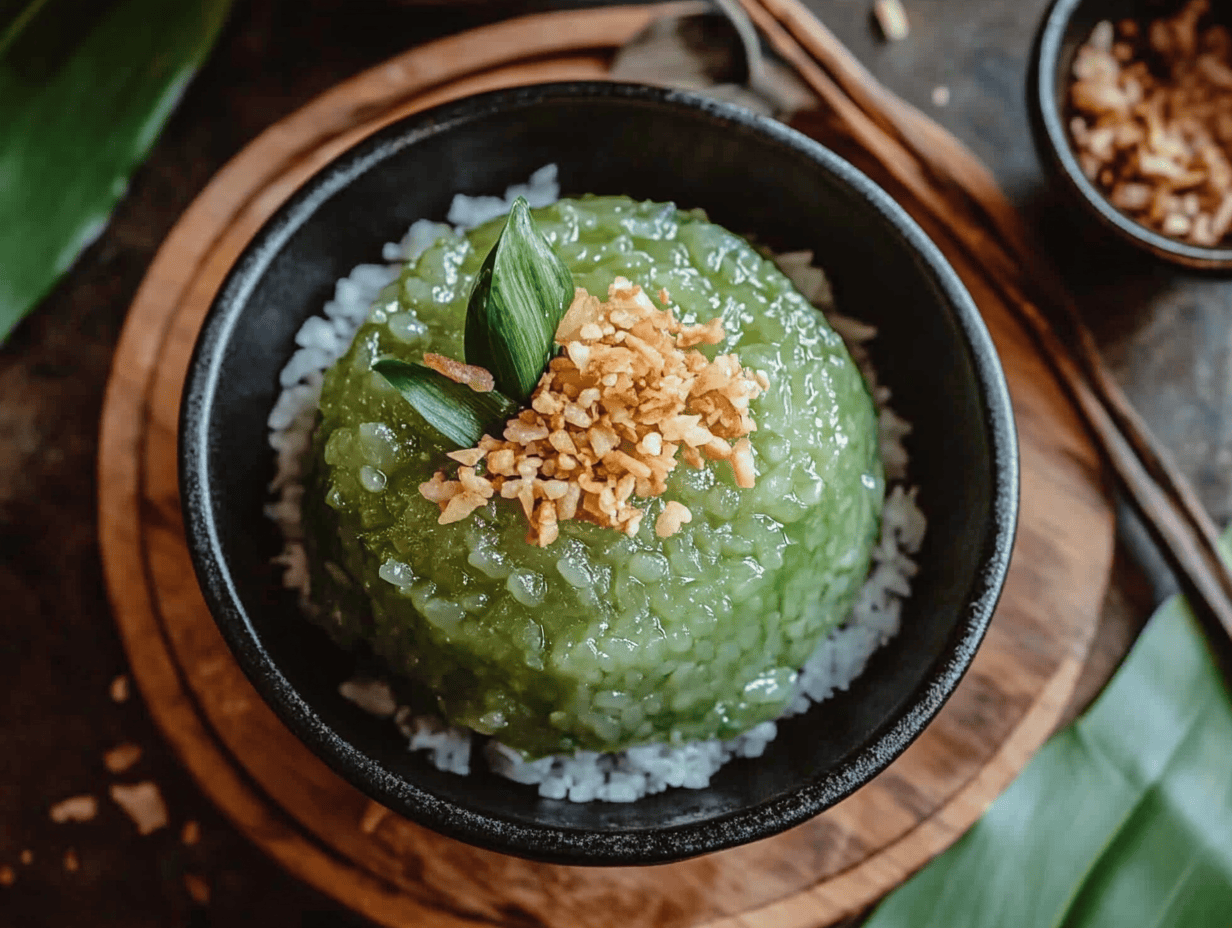
Infusing Pandan and Coconut
Creating the Perfect Pandan Flavor
Achieving the perfect pandan flavor is central to the appeal of sticky buko pandan rice. Pandan leaves, known for their sweet, floral fragrance, are the key ingredient. Start by washing the leaves thoroughly to remove any dirt. Gently bruise them with the back of a knife to release their natural oils, which are essential for infusing flavor.
For the most authentic taste, add the bruised pandan leaves directly to the rice as it cooks. Alternatively, you can create a pandan extract by simmering the leaves in a small amount of water until the color and aroma are vibrant. Strain the liquid and use it to enhance the coconut milk mixture, ensuring the flavor permeates every grain of rice.
This meticulous infusion process captures the essence of pandan, imparting a distinctly aromatic quality to the dish that complements the rich coconut, creating a harmonious blend of flavors.
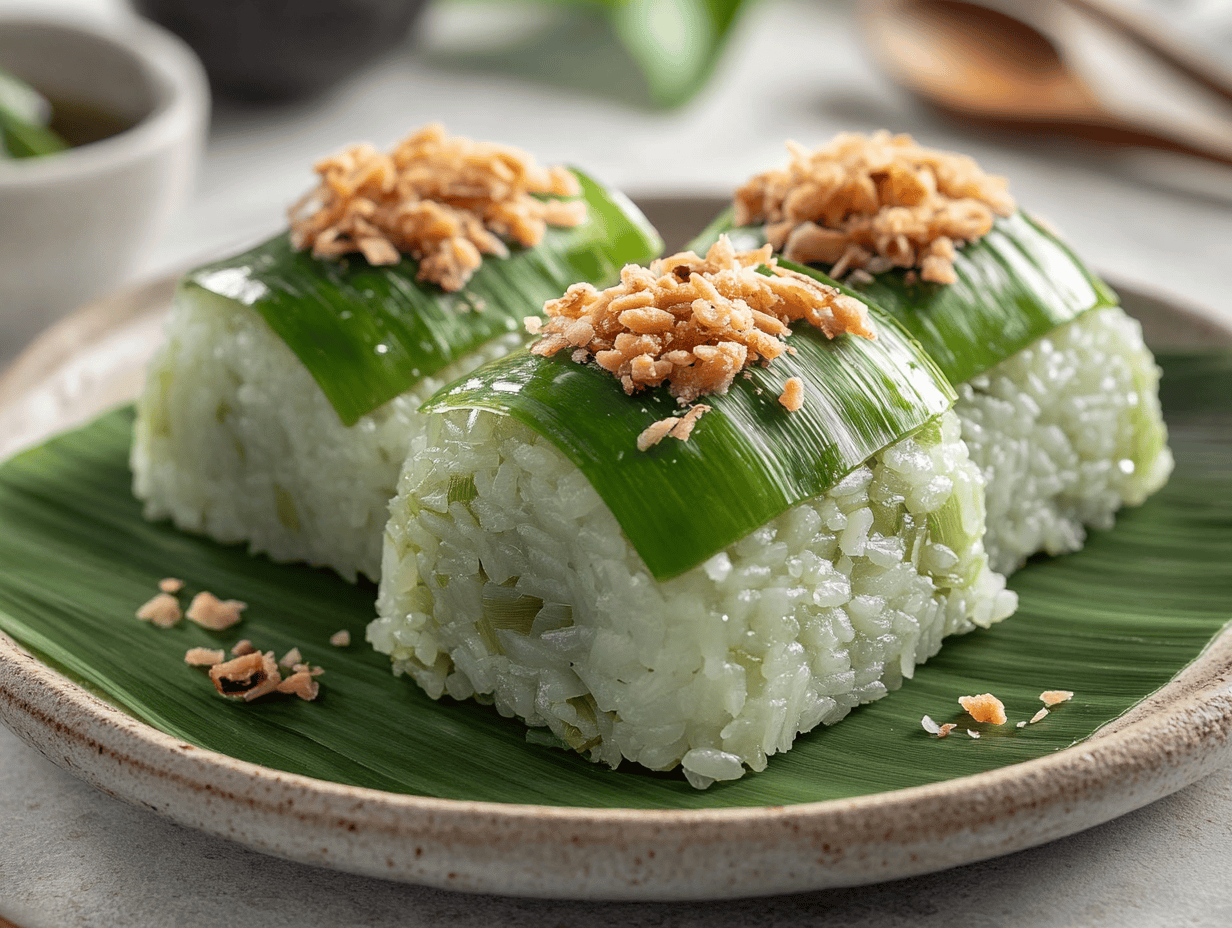
Balancing Coconut Creaminess
Balancing the creaminess of coconut is crucial to achieving the ideal consistency and flavor in your sticky buko pandan rice. The richness of coconut milk provides a luscious texture, but it’s important to use it judiciously. Start with high-quality coconut milk, as it significantly affects the dish’s overall taste and texture.
To prevent the dish from becoming overly rich, gradually add the coconut milk to the cooked rice, allowing each addition to be fully absorbed before adding more. This method ensures that the rice retains its chewy texture while being enveloped in creaminess. You can also adjust the sweetness by adding sugar to the coconut milk, tasting as you go to find the perfect balance.
Additionally, incorporating freshly shredded buko imparts a subtle sweetness and tender bite, complementing the creamy coconut. By carefully balancing these elements, you create a harmonious dish that’s indulgently creamy yet delightfully balanced.
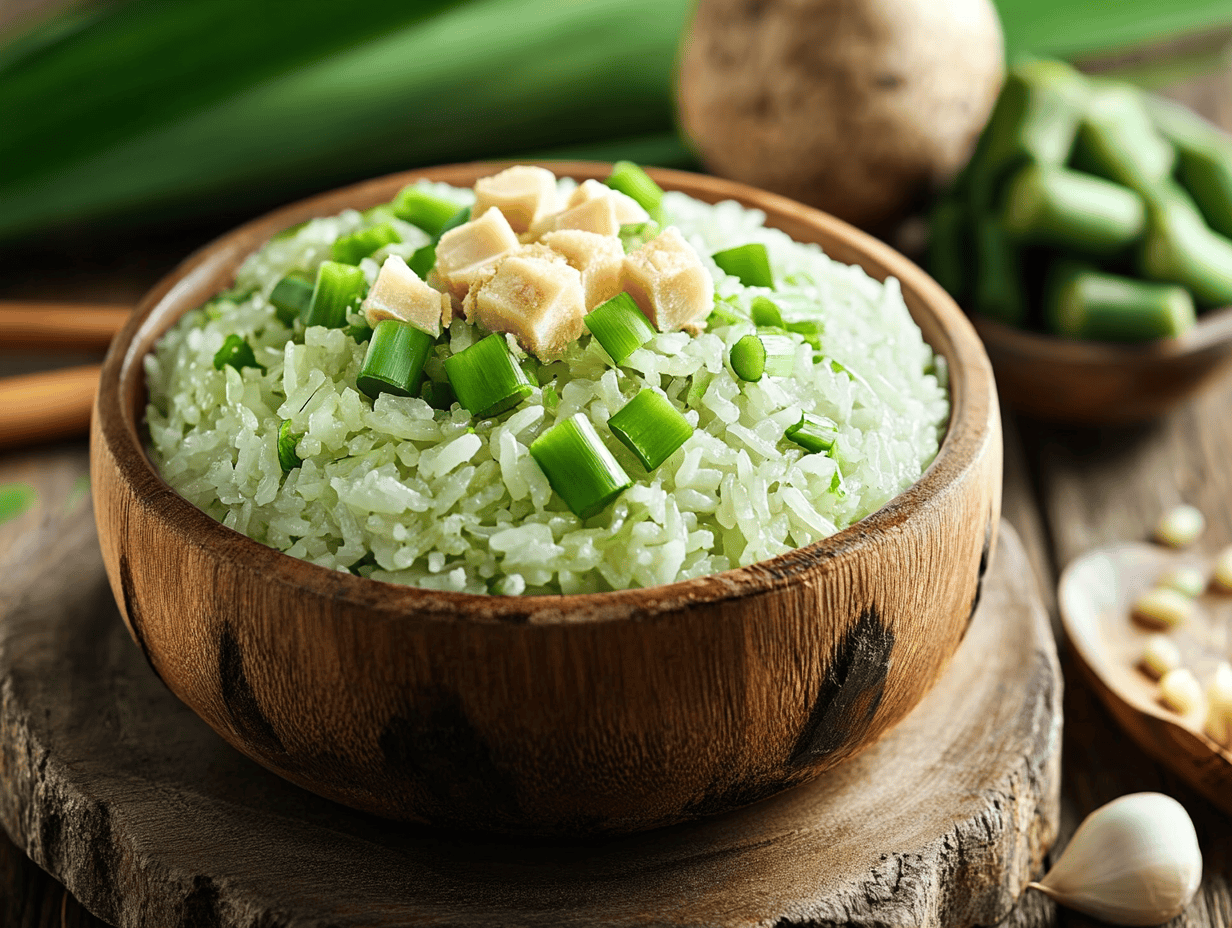
Variations and Serving Suggestions
Creative Twists on the Classic Recipe
While traditional sticky buko pandan rice is delightful on its own, adding creative twists can make it even more exciting. One popular variation is to incorporate ube (purple yam) for a colorful and flavorful contrast. Simply swirl in cooked and mashed ube into the rice mixture for a vibrant purple hue and earthy taste.
For a tropical twist, consider adding diced mango or pineapple chunks. These fruits introduce a refreshing sweetness that pairs beautifully with the creamy coconut and fragrant pandan. Alternatively, topping the dish with toasted coconut flakes or crushed nuts adds a delightful crunch and enhances the texture.
For those who enjoy a bit of indulgence, drizzle a caramel or chocolate sauce over the finished dish. These creative variations not only enhance the visual appeal but also offer different flavor profiles, allowing you to customize the dish to suit your taste preferences.
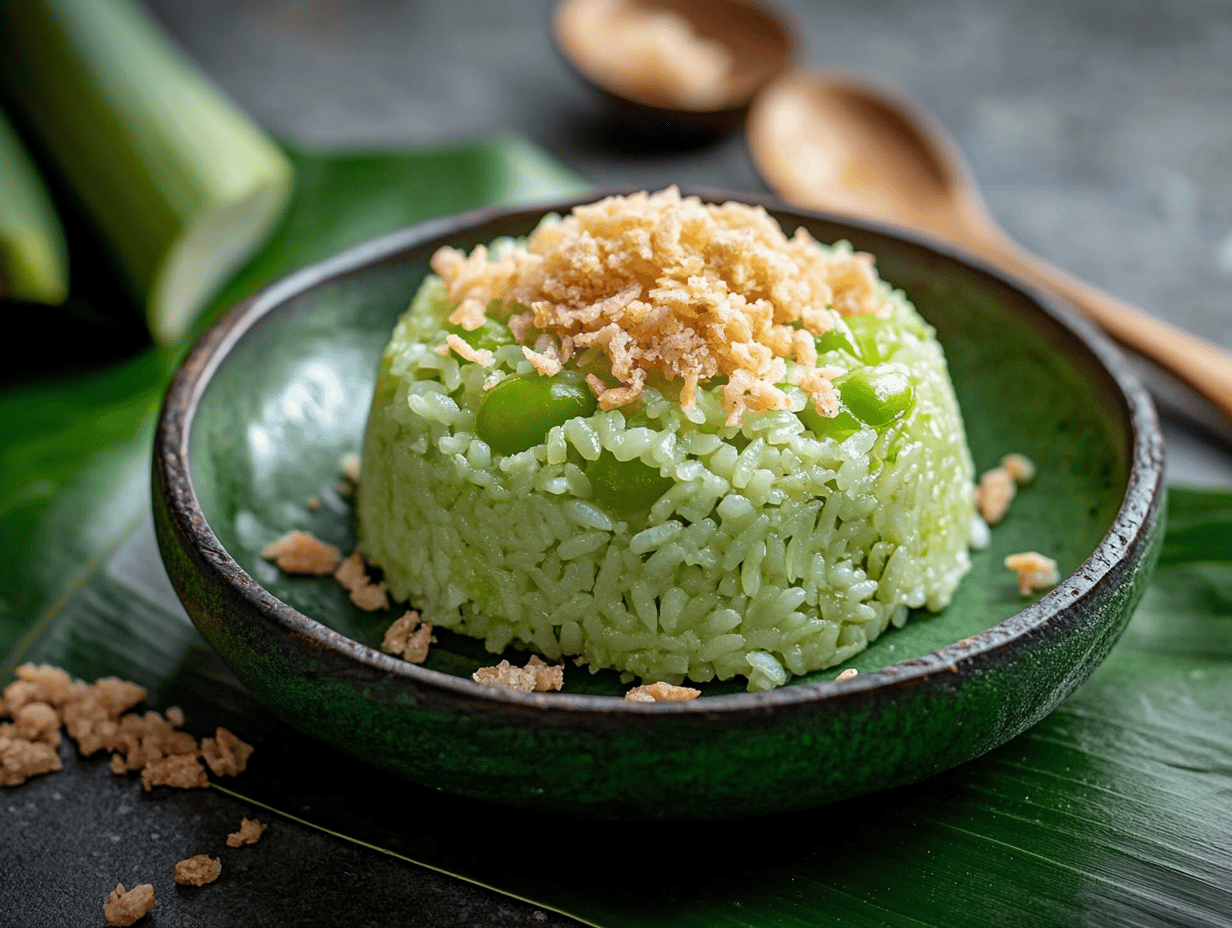
Pairing Buko Pandan Rice with Other Dishes
Pairing sticky buko pandan rice with complementary dishes can elevate your dining experience. This dessert’s rich, creamy texture and fragrant aroma make it an excellent partner for a variety of Filipino savory dishes. For instance, it pairs well with grilled meats like inihaw na baboy (grilled pork) or chicken inasal, with the dessert’s sweetness balancing the savory and smoky flavors of the meat.
Another great pairing is with a simple salad featuring fresh greens and a light vinaigrette. The refreshing salad acts as a palate cleanser between bites of the rich dessert. For a festive occasion, serve buko pandan rice alongside traditional Filipino sweets such as leche flan or turon (fried banana rolls) to create a dessert platter that showcases the diverse range of Filipino flavors.
These pairing suggestions not only complement the dessert’s taste but also highlight the versatility of sticky buko pandan rice as a delightful addition to any meal.
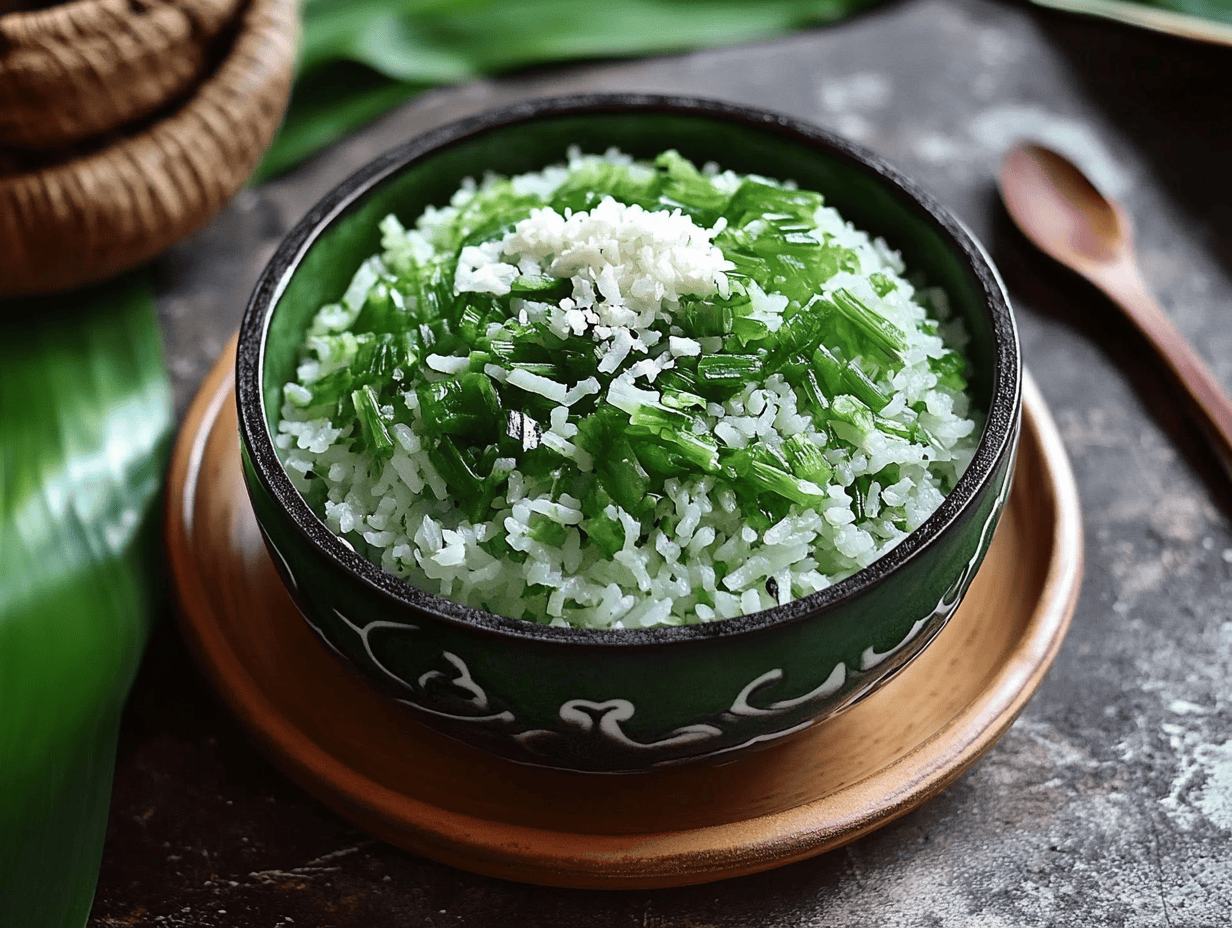
Tips and Troubleshooting
Common Mistakes and How to Avoid Them
When making sticky buko pandan rice, a few common mistakes can affect the final dish. Firstly, using the wrong type of rice can lead to textural issues. Always choose glutinous rice, as other varieties won’t achieve the desired stickiness. Another mistake is overcooking the rice, which can result in a mushy texture. To avoid this, monitor the rice closely and remove it from heat once it reaches the right consistency.
Neglecting to properly infuse the pandan leaves can lead to a lack of flavor. Ensure you bruise the leaves before adding them to the cooking rice, enhancing their aromatic qualities. Additionally, using too much sugar can overpower the natural flavors, so adjust the sweetness gradually.
Finally, failing to balance the coconut milk can make the dish too rich. Add the coconut milk in increments, allowing the rice to absorb it fully before adding more. By sidestepping these pitfalls, you’ll create a perfectly balanced and flavorful dessert.

Expert Advice for Perfect Results Every Time
For consistently perfect sticky buko pandan rice, heed the advice of seasoned cooks. Start by soaking the glutinous rice in water for at least 30 minutes before cooking. This step helps ensure even cooking and enhances the rice’s natural stickiness. When cooking, use the proper water-to-rice ratio; typically, one and a half cups of water per cup of rice works well.
To intensify the pandan flavor, consider blending fresh pandan leaves with a bit of water and straining the mixture to obtain a concentrated pandan juice. Add this juice to the coconut milk for a flavor boost.
Maintain gentle heat when simmering the coconut milk and sugar mixture, as high heat can cause the milk to curdle. Finally, allow the rice to cool slightly before serving, as this helps the flavors meld and settle. By following these expert tips, you’ll enhance the dish’s aroma, flavor, and texture, ensuring delectable results every time.

Check Out Our New Dessert Directory
We have a brand new dessert directory brining small business dessert shops in your area to new customers check it out at www.cremefilledchurros.com/business-directory/

